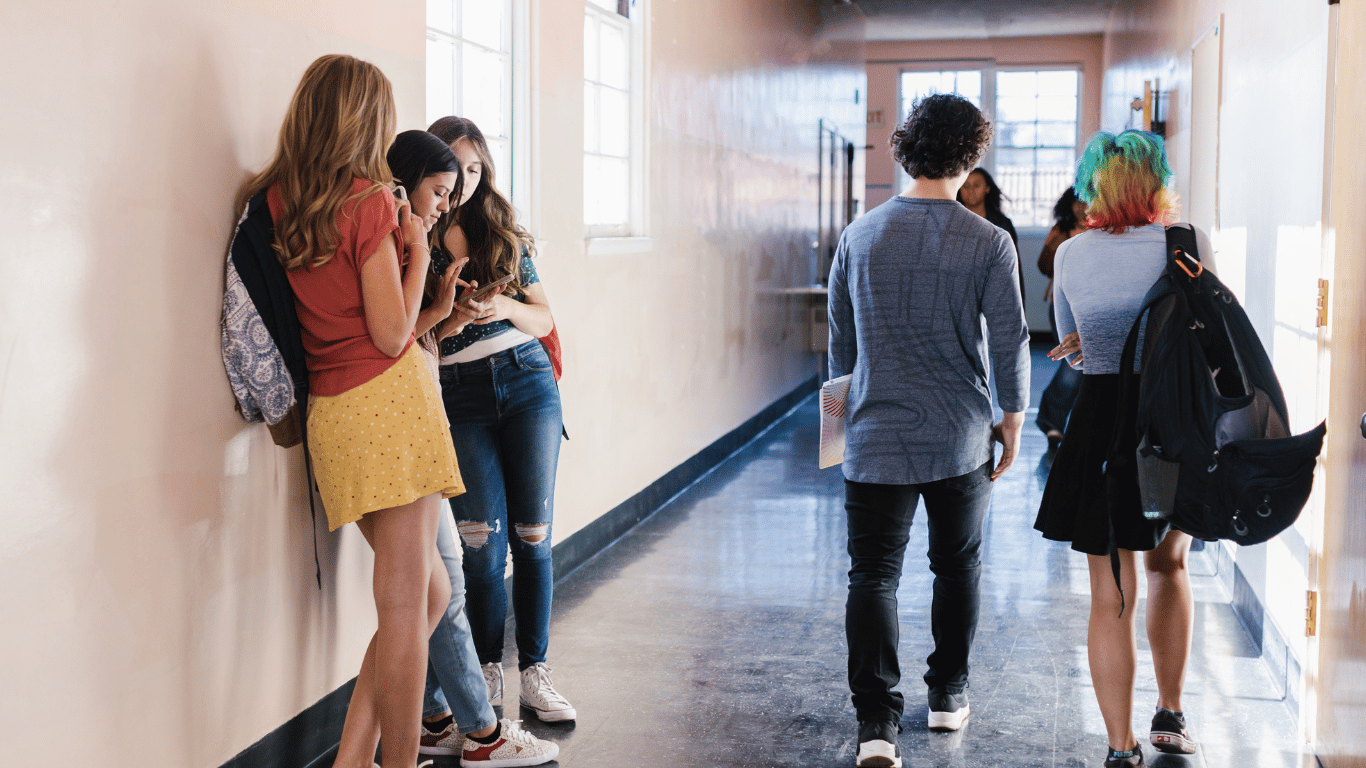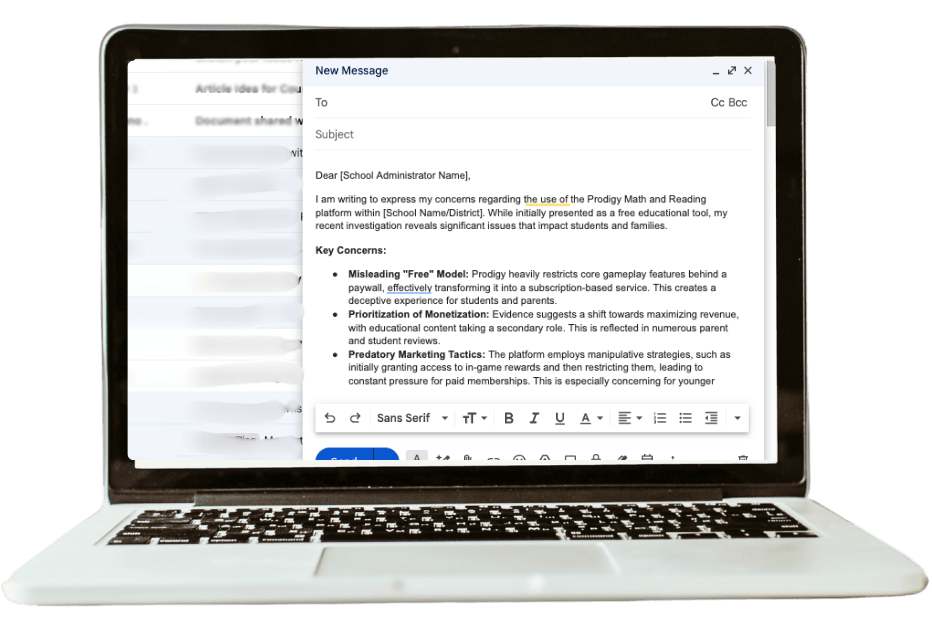I was in fifth grade, and two of my friends were over to “play.” Was it a playdate? A hangout? At that age, we were somewhere in the awkward middle. Usually, a friend group of four, that day, it was just three of us. So what did we do to pass the time? Well… our fifth-grade brains, our need to belong, and our slowly forming sense of social dynamics all teamed up—and not in a good way.
We decided to prank the friend who wasn’t there.
I can still picture us huddled together, whispering and giggling like we were master villains. We called her up and pretended we were mad at her. For no reason. Zero. Just because. It was the kind of thing you do when you’re bored and still developing an understanding of natural consequences.
While I can’t remember all the details of how we worked it out in the end, I do remember how confused and hurt our friend was. She had no idea what she’d done wrong, because she hadn’t done anything. And once she realized it was a prank, she was even more upset.
Honestly? Seeing our friend so distraught and the sense of guilt that followed helped us to learn. I knew I would never pull a mean-spirited prank again. It wasn’t worth all the negative feelings.
Learning in Play vs. Learning Online
Today’s youth are no different from we were, yet their tools and environment are vastly different. They, too, are navigating the rocky norms of child development, trying to find their place in the world (or at least amongst their peers). Yet, the stakes are higher because so much of this social-emotional learning is done online. Without careful guidance and guardrails, their mistakes are on display for the world to see.
Social scientist and author of The Anxious Generation, Jonathan Haidt, argues that the dwindling hours of free childhood play have led to a high-stakes learning environment. In the world of play, making a social mistake such as mistreating a friend, saying something silly, or misreading a peer’s intentions has consequences: it can lead to temporary punishment, embarrassment, or confusion. These uncomfortable consequences create learning opportunities.
But making that same mistake online is often less forgiving. The consequences are longer-lasting and open to public ridicule. This is an unfortunate scenario because it leads to children experiencing shame. And “Shame makes us want to disappear,” Haidt says. No wonder so many of our kids are experiencing mental health crises.
When my friends and I pulled that prank on our left-out friend, we had no way to record the conversation or our friend’s reaction. We had no way to exploit her vulnerability publicly. And we had no way to fake reality. She didn’t either.
Although our lapse in good judgment happened over a phone conversation, it was likely on a cordless home phone. The witnessing of our bad choice was limited to the four girls who shared the phone conversation. Our mistake lived in the here and now, and it ended the moment our friend chose to forgive us.
What can we do to help our kids?
Encourage in-person gatherings with friends.
Haidt pushes for something he calls “risky play.” Playtime, he says, is one of the most important things about childhood that we need to protect. We need to let them play a lot and often, with the right amount of risk.
Decades ago, parents would have wondered why experts needed to advocate for playtime. But as Jean Twenge, author of iGen, points out, our culture has shifted to a safety-obsessed one. While there are positives to this shift, it also presents a challenge to our children’s path toward healthy growth and independence, best developed through free play.
Haidt asks us to fight the temptation to be safety-obsessed in the real world and instead give our kids access to free play. He adds, “Making mistakes should be somewhat, but not excessively, costly, so a child can make a mistake and correct it with noticeable but not severe consequences.” In comparison to mainly learning in the online-only world, he considers play in real life—a natural, face-to-face world—to be “a low-stakes environment.”
Additionally, according to Haidt, “Hundreds of studies on young rats, monkeys, and humans show that young mammals want to play, need to play, and come out socially, cognitively, and emotionally impaired when they are deprived of play.” Play isn’t just helpful, it’s necessary for building strong, resilient kids who become positive contributors to society.
Delay as long as you can while considering your child’s growing social needs (i.e., share a phone)
When my kids started to turn the natural corner from family-first to friends-first, I began allowing them to share my phone number as if it were their own. Likewise, they can add their friends to my contacts list, using my phone to text, call, and FaceTime their friends. For us, this happened around the time they entered their preteen years in late elementary school.
There are multiple benefits to phone-sharing. First of all, yes, it is a sacrifice. On the other hand, having to share our phones with a younger family member serves as a good mirror for parents to recognize how addicted and reliant we ourselves are on our phones and the “easy-everywhere” lifestyle it reinforces. (See Andy Crouch’s The Tech-Wise Family for more on the “easy-everywhere” life we’ve all subconsciously adopted).
A benefit of phone sharing (with limitations and parameters in place) is that parents can keep an eye on their younger kids’ conversations without invading their privacy. I suggest an occasional check-in, offering accountability to both your kids and their friends.
You may think these check-ins are just for catching inappropriate content (images or language) or even for detecting bullying. However, I’ve discovered that this also allows parents to coach their children through challenging social situations or help them develop healthy social cues. For example, I’ve needed to teach that it isn’t appropriate to bombard a friend with the same question, “Do you want to play?” if they’ve already gotten a straight answer, “not right now.”
Eventually, your kids will graduate to having their own phone. In the meantime, let parent-child phone-sharing be a segway, where making mistakes is a healthy learning experience, and you can lovingly come alongside them as a guide. Phone sharing creates a win-win for both parent and child, allowing you to feel good about your decisions and delaying true tech independence until they are truly ready.
Other Suggestions for Lowering the Stakes with Tech
Open-Door Policy
Having an open-door policy with your family’s tech use is two-fold. First, literally, keep the door open, even if just a crack. In our family, this is a rule we encourage. Secondly, maintain an open-door policy with your communication, allowing your kids to always talk to you and come to you with their problems.
Therapist and fellow Self Ctrl writer, Angela Imhoff, says, “Showing a child love and acceptance in the midst of their failures is how we build a secure attachment and counter the effects of shame.” A strong relationship is key to helping your adolescents develop the confidence and character to navigate the sticky situations that may arise in their digital realm.
Regular Check-Ins
Don’t just check in on your kids’ phones, but check in with them. Just as we ask our kids to do, checking in with your child in real life is the best way to learn what’s going on in their world. Spend regular quality time with them. If they are nearing their teenage years, they may be spending more time alone in their bedroom. Give their door a knock and ask to be let in. Most of the time, they will be grateful to know you care, even when their fluctuating hormones get the best of their ability to show it.
Get a read on their mental health. Don’t be afraid to ask hard questions, like: How have you been feeling lately? On average, do you think you feel more joy or more sadness? More peace or more stress? What do they think is impacting this response? Having a chance to express their feelings and knowing someone is checking in on them can greatly reduce the mental health challenges teens face.
Developmentally Appropriate Socialization
I know my kids desire, and honestly, need to stay in touch with their friends. God wired us relational beings, and it is developmentally appropriate for our adolescents to make this shift from parental dependence to prioritizing relationships with peers. In the digital age, these connections will inevitably involve some tech: phone calls, FaceTime, texting, and social media interactions. However, as we all know, in today’s social landscape, kids often rely too heavily and too soon on digital sources of connection, jeopardizing instrumental in-person socialization.
Prioritizing social interactions in the low-stakes form of free play and then setting up healthy checkpoints for your child’s online socialization will help your kids develop strong bonds with their peers and learn valuable life lessons when they make mistakes rather than experience shame.

Written by: Jenna Kruse
As a speaker, writer, and mom of three, Jenna Kruse helps parents with school-aged kids overcome the frustration, fatigue, and hopelessness of parenting in the digital age so they can enjoy their kids and thrive in their role of raising the next generation to know and love Jesus. Alongside her husband, Jenna has worked with teens for over twenty years in the public school setting, the non-profit sector, and the church.




